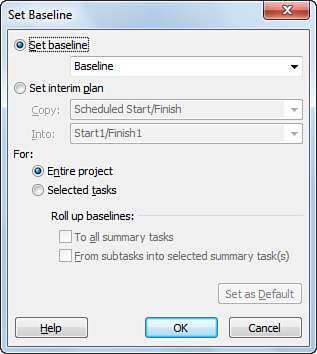Click
Set Baseline and then choose the baseline number that you want to set from the drop-down list, as shown in
Figure 1.

|
If
you need to capture only the start and finish dates for the project or
the selected tasks, you can use an interim plan instead of a baseline.
Click Set interim plan, choose which date fields you want to Copy, and then, from the Into list, choose the interim plan number where you want to capture the selected dates.
|